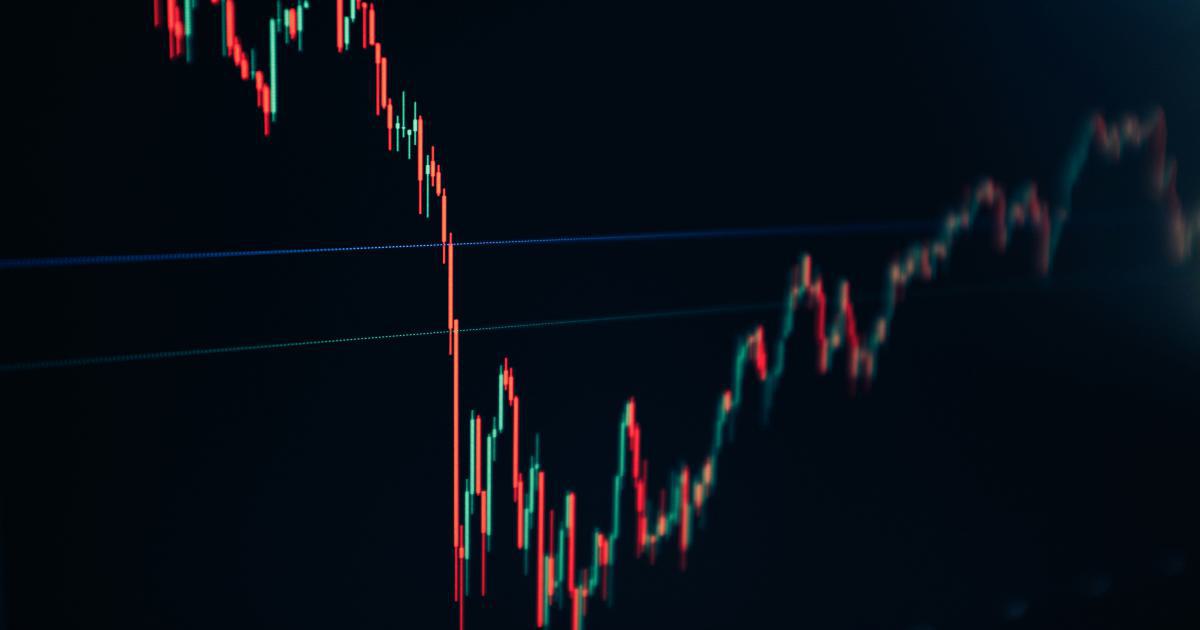Why Use Mean Reversion Strategy For Stock Trading?

The mean reversion strategy for stock trading is a time-tested approach that is rooted in the belief that asset prices will eventually return to their long-term average values. In this article, we will delve deeply into the concept of mean reversion, exploring its theoretical foundations, real-world applications, advantages, disadvantages, and practical tips for traders. From its conceptual roots to advanced algorithmic implementations, every aspect of this strategy will be examined in detail to help you understand why it continues to be a popular choice among investors worldwide.
What is the Mean Reversion Strategy for Stock Trading?
At its core, the mean reversion strategy for stock trading is based on the observation that prices and returns eventually move back towards their historical mean or average. This mean may be the historical average of the price or return; however, other factors, such as the relative strength index (RSI), can be used to detect overbought or oversold conditions. When a stock’s price deviates significantly from its historical performance, a reversion is expected, offering a potential trading opportunity.
This method is not just a simplistic rule of thumb—it is supported by rigorous statistical insights and econometric research. Traders and quantitative analysts use statistical models like the Ornstein-Uhlenbeck process or other stochastic processes to predict the timing and magnitude of the reversion. The belief behind mean reversion is that excessive moves away from the mean are unsustainable and will eventually correct, thereby providing a signal for buy or sell actions.
The Historical Context and Theoretical Background
The idea of mean reversion has its roots in the early studies of stochastic processes and market dynamics. The concept emerged from the study of natural phenomena where variables tend to oscillate around a natural equilibrium. When applied to financial markets, this notion suggests that prices exhibiting extreme movements—whether upward or downward—are likely to revert to a central value.
Historically, many empirical studies have shown that various financial instruments such as stocks, commodities, and even currencies follow a mean reverting behavior over different time spans. This might be due to market psychology, regulatory mechanisms, or the natural cycle of investor sentiment. By analyzing price time series data, investors have noted that extreme values tend to revert to normal levels, making mean reversion a cornerstone for value-based and statistical arbitrage strategies.
Quantitative traders often incorporate this strategy into their models as it can be adapted to a wide range of financial instruments. Although there are different approaches and models that assume mean reversion, they all share the same basic premise of returning to an average or “mean” after deviating too far.

Differentiating Mean Reversion from Other Strategies
One of the key distinctions between mean reversion and other trading strategies, such as momentum trading, is the underlying assumption about market behavior. Momentum trading operates on the principle that assets that have performed well in the recent past will continue to perform well in the near future, and vice versa. On the other hand, the mean reversion strategy assumes that any sustained deviation from the mean is temporary.
While momentum traders might chase trends, mean reversion traders often wait for excessive moves away from the average—either to capitalize on expected returns upward on a dip or for profits from downward corrections. This fundamental difference means that each strategy responds differently to market shocks, volatility, and economic news.
Understanding the Principles Underlying Mean Reversion
The mean reversion strategy for stock trading operates on several key principles that make it a robust method when applied correctly:
Statistical Evidence and Models
Statistical models play a significant role in justifying the validity of mean reversion. Many models that describe the price dynamics of assets rely on the assumption that deviations from a long-run mean are not permanent. For instance, the Ornstein-Uhlenbeck process is a common model that simulates the behavior of asset prices reinforcing the idea of an attracting equilibrium level. These models help in quantifying the reversion speed, the risk associated with extreme movements, and the expected time frame within which prices might revert to the mean.
Empirical research has shown that by monitoring statistical indicators like the standard deviation, z-scores, and Bollinger Bands, traders can detect significant deviations from the norm. Such statistical measures provide an objective basis for executing trades when a stock is statistically likely to revert to its mean.
Psychological and Behavioral Factors
Mean reversion is also deeply tied to human psychology. Investor behavior often results in overreaction to news and events, causing stock prices to swing excessively in either direction. This overreaction provides opportunities for mean reversion strategies. As emotions such as fear and greed drive prices to unsustainable extremes, rational analysis usually forces a correction. Traders who remain calm and wait for the market to “correct” these anomalies can find profitable entry or exit points.
For example, during periods of market euphoria, stocks can be driven to unsustainable highs due to widespread speculative buying. Conversely, during market panics, prices may drop sharply below their intrinsic values due to a surge of selling. In both cases, the mean reversion strategy can be used to identify potential entry points when prices begin to normalize.
Market Efficiency and Information Flow
The concept of market efficiency suggests that all available information is usually reflected in asset prices. However, due to delays in information dissemination and the discrete nature of trading, temporary mispricings can occur. These mispricings serve as the backbone for mean reversion strategies. Additionally, regulatory mechanisms and intervention by large institutional investors often help restore the balance when prices deviate excessively from fundamental values.
By keeping an eye on these market dynamics, traders can anticipate when a stock is likely to revert to its natural equilibrium. Understanding the underlying reasons for these mispricings—such as news events, earnings reports, or macroeconomic indicators—is crucial for successfully implementing a mean reversion strategy.
Implementing Mean Reversion Strategy in Practice
Moving from the theoretical to the practical, implementing a mean reversion strategy for stock trading involves a set of systematic steps. This section outlines the methods used by professional traders and quantitative analysts to bring this strategy to life.
Step 1: Data Collection and Statistical Analysis
The first step is to gather historical price data for the target stocks. Utilizing databases and financial APIs, traders collect time series data, which is essential for calculating statistical measures like the mean, standard deviation, and moving averages. Sophisticated tools such as Python, R, and MATLAB are widely used to conduct this analysis.
Once data is compiled, analysts calculate the moving averages and define thresholds that indicate when a stock is significantly deviating from its mean. Using z-scores and confidence intervals, they determine the statistical significance of these deviations, which in turn informs the timing of buy and sell signals.
Step 2: Defining Entry and Exit Points
The core of the strategy lies in clearly defined entry and exit points. Once a deviation from the mean is identified, traders determine how far the price must move beyond the average before it is considered a signal. Too narrow a threshold could lead to false positives (whipsaw trades), while too broad a threshold might delay the signal until after the majority of the move has occurred.
Sophisticated models often combine statistical analysis with additional technical indicators like the Relative Strength Index (RSI) and Bollinger Bands. These combined signals offer a higher confirmation rate and reduce the risk of entering trades based on noise alone.
Step 3: Risk Management and Position Sizing
A robust risk management framework is crucial when employing the mean reversion strategy. Just because a stock has deviated from its mean does not guarantee that it will revert immediately or that it won’t continue to move away from equilibrium. Therefore, setting stop-loss orders and defining risk-to-reward ratios is essential to mitigate potential losses.
In practice, traders will often limit a single trade to a small percentage of their overall portfolio to ensure that a few adverse moves do not result in catastrophic losses.
Step 4: Backtesting and Forward Testing
Before any mean reversion strategy is implemented live, it must be rigorously backtested against historical data. This process helps to refine entry and exit points and validates the underlying hypothesis of reversion. Once the model exhibits promising historical performance, it is then forward tested in real-time market conditions using paper trading or simulator environments.
This thorough testing ensures that the strategy can adapt to different market regimes and helps identify any pitfalls before real capital is at risk.

Step 5: Automation and Algorithmic Implementation
Many professional traders use automated systems to implement mean reversion strategies. Algorithmic trading platforms can scan multiple stocks and execute trades instantaneously when the predefined conditions are met. By combining statistical models with machine learning algorithms, more advanced systems can adjust the parameters dynamically, keeping pace with the changing market behavior.
Automation reduces the emotional bias inherent in manual trading and allows for precise execution. For example, high-frequency trading firms often leverage algorithmic mean reversion models to exploit fleeting market inefficiencies, making decisions in fractions of a second.
Real-World Applications and Case Studies
To better understand the practical effectiveness of the mean reversion strategy for stock trading, it is important to examine real-world examples and case studies from various market conditions.
Case Study: Equity Market Corrections
Consider the behavior of large-cap stocks during market corrections. Historically, during periods of economic uncertainty or market panic, even fundamentally strong stocks tend to experience rapid declines. However, when these stocks reach a certain threshold where prices are significantly lower than their historical average, mean reversion strategies have historically signaled a potential turnaround.
In one notable instance during a market correction phase, quantitative funds successfully implemented mean reversion models that signaled a buying opportunity when tech stocks fell excessively due to short-term panic, even though their long-term fundamentals remained solid. Once the market sentiment normalized, these stocks experienced a significant rebound, providing substantial returns to the traders who were patient enough to wait for the reversion.
Case Study: Pair Trading Strategies
Pair trading is a popular form of statistical arbitrage that often relies on the concept of mean reversion. In this strategy, two historically correlated stocks are monitored for divergence. When the price ratio deviates from its historical norm, traders take long and short positions in the respective stocks, betting on a convergence back to the mean. If the reversion occurs as projected, profits are realized on both sides of the trade.
This method has been successfully implemented in various sectors, including energy and technology, where the dynamics of price movements often reflect temporary inefficiencies rather than lasting trends.
Integration with Technical Analysis
Many traders augment the mean reversion strategy with conventional technical analysis tools. For example, the use of oscillators such as RSI or stochastic indicators can help determine overbought or oversold conditions, reinforcing the signals generated by statistical models. By combining these methods, traders create hybrid strategies that are more resilient to false signals and market anomalies.
This multidimensional approach is highly effective in markets where pure statistical signals might be obscured by noise. By cross-validating the statistical signals with technical analysis, traders build confidence in their positions and systematically manage risk.

Benefits of Using Mean Reversion Strategy for Stock Trading
The mean reversion strategy for stock trading offers several clear advantages which contribute to its ongoing popularity among investors. Understanding these benefits can help traders determine if this approach aligns with their overall trading philosophy and risk management framework.
Predictability and Statistical Backing
One of the biggest advantages of the mean reversion strategy is its strong statistical foundation. The concept that prices will revert to an average is supported by years of empirical research and rigorous statistical testing. This predictability allows traders to calculate probabilities and potential returns with greater precision than some other trading strategies based solely on intuition or market sentiment.
Better Risk Management
Because the strategy is based on defined price deviations from historical averages, it inherently provides clear metrics for setting stop-loss levels and profit targets. This clarity helps in implementing effective risk management rules. As a result, mean reversion strategies tend to have a well-defined risk-to-reward ratio that protects traders during volatile market conditions.
Flexibility Across Assets and Markets
Another advantage is the adaptability of the mean reversion strategy across a wide array of markets and asset classes. Whether dealing with stocks, commodities, or even currencies, many assets display some degree of mean reverting behavior over specific timeframes. This universality makes the strategy a versatile tool that can be used in both trending and range-bound markets.
Reduction of Emotional Bias
By relying on quantitative models and statistical analysis, mean reversion trading helps reduce the influence of emotions on decision-making. This systematic approach enables traders to stick to predetermined rules, thus minimizing the adverse effects of fear and greed which often lead to impulsive decisions in more discretionary trading methods.
Analyzing the Risks and Limitations
Despite its advantages, the mean reversion strategy for stock trading is not without risks and limitations. Being aware of these challenges is essential for traders to manage expectations and adjust strategies accordingly.
False Signals and Overfitting
One significant risk associated with mean reversion is the possibility of false signals. The market might continue to deviate from the mean without reverting for an extended period due to structural changes in the underlying economy or new market dynamics. Additionally, overfitting statistical models to historical data can lead to strategies that perform well in backtests but fail under real market conditions.
Market Regime Shifts
Market conditions are not static, and shifts in economic environments can sometimes lead to a breakdown in traditional mean reverting behavior. For instance, during times of sustained economic expansion or collapse, the historical mean might shift, rendering past data less relevant. Traders thus need to continuously review and recalibrate their models to account for such changes.
Liquidity and Transaction Costs
The success of mean reversion strategies can also depend on market liquidity. In illiquid markets, the expected reversion may be delayed or may not occur due to the inability of prices to adjust rapidly. Furthermore, frequent trading as part of the strategy may lead to significant transaction costs, which can erode the overall profitability of the strategy.
Psychological Barriers and Timing
Even when the statistical signals are clear, traders might face psychological challenges when executing trades that go against prevailing market sentiment. Waiting for a mean reversion to occur requires patience, and an early entry or exit can jeopardize the trade. Developing the discipline to adhere to strategy parameters is as important as the underlying statistical model.
Comparing Mean Reversion Strategy with Momentum Trading
In order to fully appreciate the strengths and weaknesses of the mean reversion strategy, it is useful to compare it with other prevalent strategies in stock trading, such as momentum trading.
Momentum Trading Overview
Momentum trading is built on the idea that stocks which are trending will continue to move in the same direction for some time. Traders using momentum strategies ride the wave of market sentiment until signs of reversal are observed. This strategy often involves a combination of technical analysis indicators to confirm trends before entering trades.
Key Differences
- Direction vs. Correction: While momentum trading seeks to capture continued movement in the direction of the trend, mean reversion is focused on capturing corrections after extreme price movements.
- Risk Factors: Momentum trading can expose traders to trend continuation risks, especially during rapid reversals, whereas mean reversion strategies might suffer in trending markets where prices do not return to historical averages quickly.
- Statistical Foundation: Mean reversion typically relies on statistical measures such as moving averages and standard deviations, while momentum trading depends on price movement trends and market sentiment.
When to Use Each Strategy
The choice between these strategies depends largely on market conditions. In range-bound markets where prices oscillate around a stable mean, mean reversion strategies are more likely to succeed. Conversely, in markets experiencing strong directional trends, momentum strategies might provide higher returns. Many sophisticated traders actually blend these approaches, using mean reversion indicators as contrarian signals in predominantly trend-based markets to enhance risk management.
Advanced Techniques and Algorithmic Enhancements
The evolution of technology and data analytics has opened new avenues for implementing mean reversion strategies more effectively. Cutting-edge techniques combine artificial intelligence, machine learning, and statistical modeling to fine-tune trading decisions.
Machine Learning Applications
Machine learning models can be trained on vast amounts of historical and real-time data to predict the probability of mean reversion more accurately. Algorithms can dynamically adjust model parameters, such as the reversion speed or threshold deviation levels, based on continuous feedback from the market. These adaptive models can improve the probability of a successful trade by filtering out noise and detecting subtle changes that static models may miss.
High-Frequency Trading (HFT) Approaches
High-frequency trading firms often deploy mean reversion strategies on extremely short time frames. By using sophisticated hardware and colocated servers, these firms exploit fleeting market inefficiencies. Such strategies rely on statistical arbitrage, where the mean reversion signals are identified and acted upon within fractions of a second. While the principles remain similar, the execution speed and capital allocation differ markedly from traditional approaches.
Integration with Big Data Analytics
In today’s data-driven environment, traders can harness big data analytics platforms to analyze a wide array of factors influencing market behavior. By incorporating news sentiment analysis, social media trends, and macroeconomic indicators, advanced mean reversion models gain additional layers of context. This comprehensive approach helps traders distinguish between genuine reversion signals and false positives induced by short-term market hysteria.

Best Practices and Expert Tips
Since the mean reversion strategy for stock trading has its roots in both quantitative research and practical trading, several best practices have emerged from the experiences of professional traders:
Constantly Update and Validate Models
Financial markets are highly dynamic. A model that worked effectively five years ago may not capture new market realities. It is essential to continually backtest, update, and validate models using recent data. This includes adjusting parameters, risk thresholds, and considering new variables that may affect reversion behavior.
Combine Multiple Indicators
Relying solely on a single indicator can be risky. Experts recommend combining several technical and statistical indicators to generate robust signals. For instance, overlaying Bollinger Bands with RSI and moving averages can provide a multi-layered confirmation of mean reversion, reducing the probability of false signals.
Patience and Discipline
Even the most statistically rigorous strategy will not guarantee success if psychological factors come into play. Maintain discipline by strictly adhering to the prescribed risk management rules and entry/exit criteria. Avoid impulsive actions driven by market noise, and remember that mean reversion often requires patience.
Understand Market Context
No strategy works in isolation. Always consider broader market trends and macroeconomic factors. Use mean reversion as one tool among many—complementing it with momentum indicators, economic data, and sector performance analysis to build a more comprehensive trading plan.
Leverage Technology
Automation and algorithmic trading systems remove emotional biases and offer precision in execution. Even if you are trading manually, consider leveraging technology for calculating indicators and generating alerts. Many modern trading platforms offer built-in tools for implementing mean reversion strategies effectively.
Conclusion: The Enduring Appeal of Mean Reversion
The mean reversion strategy for stock trading remains a popular and enduring method thanks to its strong statistical foundation, effective risk management, and wide adaptability. It offers a structured approach that can be refined through quantitative methods and augmented with modern technologies like machine learning and algorithmic trading. While it may not be flawless and does come with its limitations, when applied judiciously and in the right market conditions, mean reversion offers reliable opportunities for profit.
This in-depth review of mean reversion in stock trading highlights the significance of disciplined execution, ongoing model validation, and the importance of considering both psychological and statistical factors. Investors and traders who are prepared to invest time in research and backtesting can benefit immensely from this strategy, especially during periods of market volatility and overreaction.
The future of mean reversion looks promising as integrating real-time data and advanced analytics continues to evolve. Whether you are a novice seeking a systematic entry into trading or an experienced professional looking to diversify strategies, mean reversion provides a compelling blend of quantitative rigor and practical applicability.
Ultimately, successful trading is a mix of art and science, and understanding why prices tend to revert to their historical means can significantly enhance trading decisions. By adhering to best practices and continuously seeking improvements in strategy design, traders can harness the full potential of mean reversion to manage risk and capture opportunities in ever-changing market landscapes.
As financial markets become increasingly complex, a deep understanding of strategies like mean reversion, complemented by technological advancements, will remain invaluable. Through careful analysis, disciplined execution, and persistent refinement, the mean reversion strategy for stock trading stands out as a robust and time-honored approach to navigating the uncertainties of the market.
In this comprehensive article, we have explored the theoretical background, practical implementation, and real-world applications of the mean reversion strategy. By considering both its strong statistical underpinnings and practical challenges, traders can better assess when and how to use this strategy to their advantage. As the markets evolve, so will the techniques and technologies that support mean reversion, making it an enduring tool in a trader’s arsenal.
Unlock Trading Potential with Automated Analysis
Tired of missing opportunities and making suboptimal trading decisions? TrendSpider's cutting-edge platform automates complex technical analysis, saving you time and reducing human error.
With multi-timeframe analysis, dynamic alerts, backtesting, and customizable charting, you'll gain a competitive edge in identifying trends and making informed trades across global markets.
Unleash the Power of Automated Trading Analysis
Are you struggling to keep up with the fast-paced trading world? TrendSpider empowers you with cutting-edge tools for optimal strategy execution.
Our automated technical analysis suite eliminates guesswork, backtests strategies, and delivers real-time alerts, saving you valuable time and effort.


